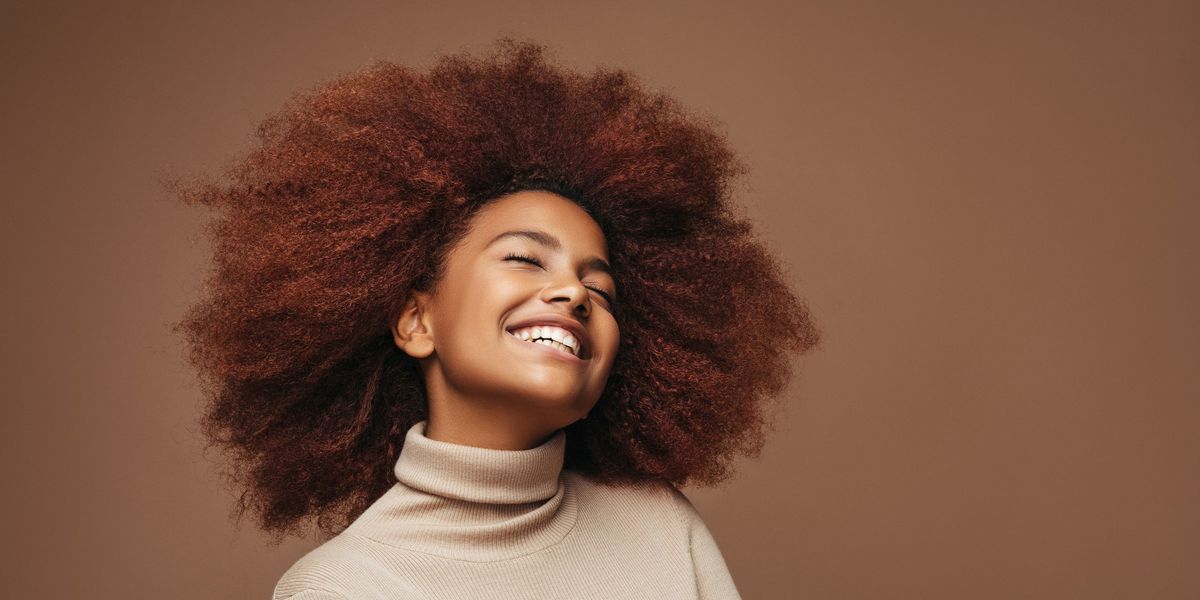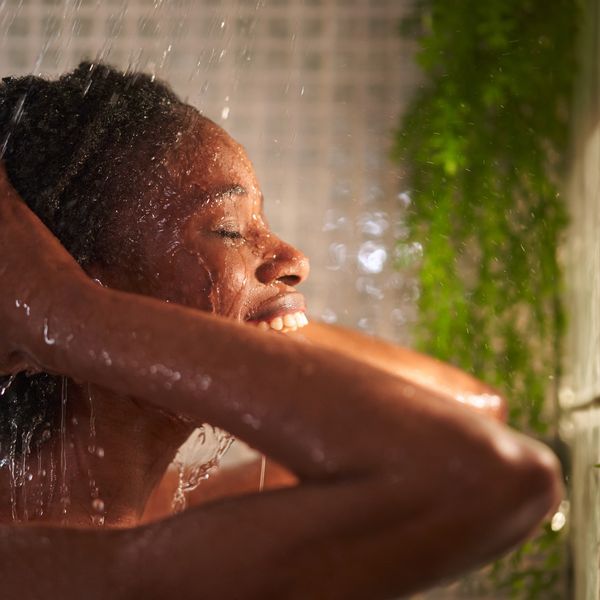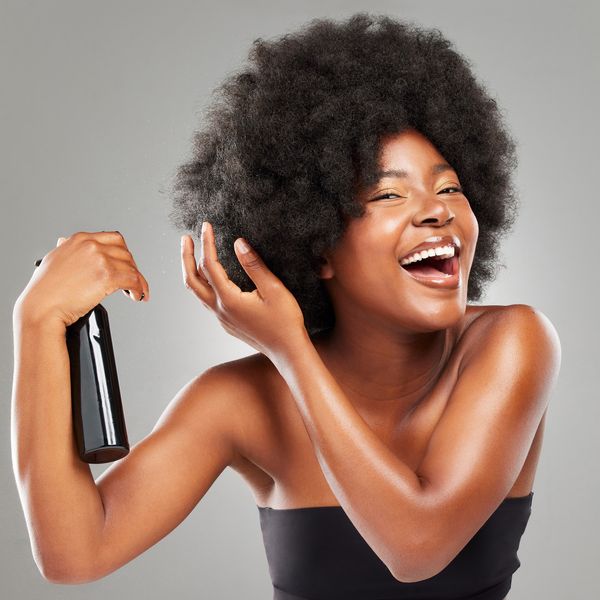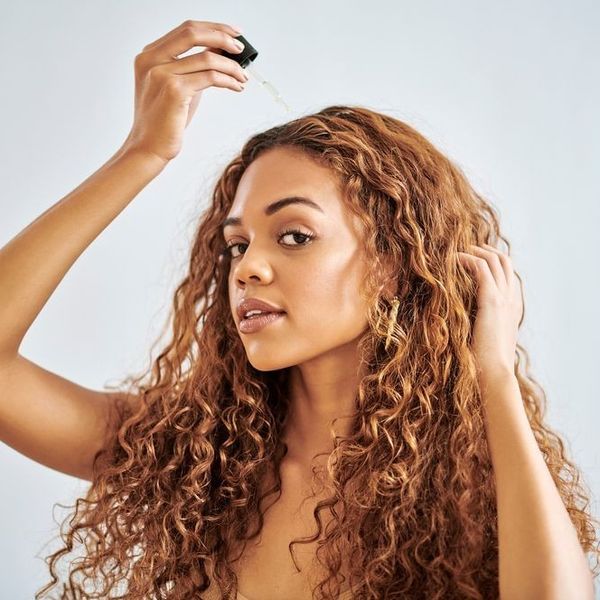
Prep For Fall With These 10 Autumn-Themed Natural Hair Care Tips
This December will mark two years since I lost, hell, over 90 percent of my belongings in a house fire (check out “My House Burned Up. Three Days Before Christmas. What It Taught Me.”). Only people who have gone through something similar get how long it takes to…replenish. That’s why I was so excited about setting some money aside this year so that I could get the kind of fall wardrobe that I’ve been wanting for a hot minute now. Since autumn is my favorite time of year, I like to prepare for it more than any other season.
My hair is not exempt. Boy, the more I am intentional about achieving some real hair length, the more research I like to do when it comes to giving my tresses exactly what they need — this includes what’s required from season to season.
That’s what this article is all about. With fall officially being a week away, I wanted to give you some time to get your hair and your coins ready to provide it just what it needs so that it can adjust nicely to cooler (and oftentimes wetter) weather.
1. Comb More than Brush

Getty Images
Although this one might sound a bit odd, hear me out. So long as you use the right kind of brush (a detangling one and/or a boar bristle brush), there are benefits that come with brushing your hair. Brushing helps stimulate your scalp and distribute natural oils to coat your hair strands, and brushing can get rid of natural hair strands that shed on a daily basis. However, the reason you might want to comb (or pick) more than brush during the fall season is because the semi-drastic shifts in temperature tend to create a jet stream that brings more wind and rain.
And when it’s damper outside, that can make your hair frizzier — and what can add to the frizz is brushing your locks because it separates each strand, which makes it easier for the cuticles on them to stand up and out (when hair isn’t frizzing up, the cuticles are smooth). Since the process of combing helps to keep your strands more “clumped together,” which can reduce frizz, it’s a hairstyling hack to keep in mind…if frizz is something that you want to avoid, that is.
2. Avoid Hair Drying Products

Getty Images
Speaking of controlling frizz, here’s another tip to keep in mind. Did you know that the main reason why frizz happens in the first place is because hair lacks moisture? Basically, the tiny “scales” that cover each strand, when there is no frizz, they lie down smoothly. Oh, but when there’s some frizzing going on, they stand all over the place. Since our hair is usually naturally drier anyway (because the sebum from our scalp has a harder time coating our strands from root to tip due to our curly hair texture), our hair frizzes up more than most. That’s why we have to be hypervigilant about keeping moisture in it.
And why is this relevant during the fall season? Well, if there’s more rain, this means that water evaporates into the air, and when the hydrogen bonds from the water connect with the protein in your hair, that can cause frizz, especially if/when your hair is already dry. That’s why it’s important to avoid hair products that have drying agents in them — ones like alcohol, sulfates, polyethylene glycol, ammonia (which is what’s in a lot of hair dyes), and dimethicone (a type of silicone) — for starters.
3. Apply a Leave-In Conditioner

Getty Images
If you’re looking for a proactive way to keep moisture in your hair, you can never go wrong with a water-based leave-in conditioner. What I like about them is they’re a quick way to add some moisture and softening agents to my hair in between wash days (which is my deep conditioning day). The way that I apply it is I add a couple of dabs to my hair at night before I put my hair in 2-6 plaits (in order to keep my hair stretched without heat).
By morning, the leave-in is dry, so I can style my hair without worrying about whether the dampness from the leave-in will cause my hair to look curlier than I might want it to be. As far as some of the best leave-ins (for curly hair) that are currently on the market, you can check out a few recommendations here, here, and here.
4. Use Hair Masks and Hot Oil Treatments

Getty Images
To tell you the truth, hair masks are something that should be used year-round. That’s because they add hydration, smooth hair cuticles, help to prevent split ends, strengthen hair follicles, keep your scalp healthy, and make your hair soft to the touch. As far as hot oil treatments are concerned, they’re great at repairing hair damage, reducing frizz, adding shine to color-treated hair, soothing scalp irritation (including the kind that is the result of dandruff,) and also keeping split ends from getting out of hand.
When it comes to how often you should treat your hair to a mask or an oil treatment, my two cents would be to alternate wash days — meaning, one wash day, go with a hair mask, and on the next, use a hot oil treatment. You can get some solid tips for how to DIY a hair mask by watching the videos here and here and how to do your own hot oil treatment by watching the video here and here.
5. Try Color-Depositing Shampoos and Conditioners

Getty Images
If you’re someone who likes to play with hair color, I definitely think that the fall is better than the summer to do it; that’s because the summer season brings a lot of heat that can dry out your hair, which can result in serious damage to dyed strands. Since the fall season is cooler, current trending colors like chestnut brown, wine, and bold highlights can have your hair looking amazing without compromising its health (quite as much).
If you want to keep your color lasting longer so that you don’t have to retouch it (and dry your hair out anyway) quite so often, invest in some color-depositing shampoos and conditioners. They’re basically semi-permanent hair products that will serve as a “top coat of color” for your hair for 10-15 wash days.
I’ve tried them before and, especially the conditioners, have done wonders as far as adding depth and shine to my hair without compromising its health. Cosmo has some shampoo recommendations here. Byrdie has some conditioner recommendations here.
6. Put Shampoo in Your Hair Dye

Getty Images
I wish I could remember where I learned this hack from, but just trust me when I say that it’s a TOTAL game-changer. It can’t be said enough that one of the biggest misconceptions that a lot of us have when it comes to our hair is that Black hair doesn’t grow long. The hell you say. Although genetics do somewhat play a role (for sure), the reality is a lot of us don’t see inches because our hair breaks off as fast as it grows — and that’s because we don’t take care of our ends as well as we should.
Case in point, since our ends are the oldest parts of our hair, if you plan on coloring your hair (especially if you’re about to retouch your color), your ends need to be color-treated the least — one, because they are already fragile and two, because they already have some color on them (if you’re coloring for the first time).
That said, one way to give your ends a ”once over” of color (for added depth) while damaging them as little as possible is to put some shampoo in your hair dye once you’ve already colored the rest of your hair. As you’re preparing to rinse the dye out, use that shampoo to penetrate your ends for about five minutes before thoroughly washing your hair without shampoo that has no dye in it (make sure that it’s sulfate-free).
Your ends will get a coat of color, and you won’t have to worry about stripping them of the natural oils that they need to keep from breaking off. Brilliant.
7. Don’t Forget the Thermal Heat Protectant

Getty Images
Hands down, I think the best time of year to get some longevity out of a blowout is the fall season. That’s because, since it’s cooler outside, that means less sweating, which means your strands are able to stay stretched out for longer periods of time. Now, this doesn’t mean that you should just go ham with your blow dryer and flat iron on a daily basis — but you should be able to pull off a few blowouts before Christmas without any hair damage…so long as you deep condition your hair and apply a thermal heat protectant before applying any heat.
Although some come in sprays and others in creams, my recommendation is “Option B” because it tends to coat our hair better. You can check out a few options to go with here. And as far as how to create the perfect blowout on natural hair, some YouTubers can walk you through it step-by-step. Check out this one (here), this one (here), this one (here), this one (here) and this one (here).
8. Get Some Hair Serum

Getty Images
Even though I did say earlier that a type of silicone can dry out your hair, that doesn’t make every silicone on the planet the devil. The reality is that serums, which are made from silicones, can be beneficial when it comes to extending the dye in your hair, preventing heat damage, increasing hair elasticity, detangling your hair, and definitely adding some major sheen and shine to it. That’s why you can never go wrong with hair serum being the “final touch” to your blowouts.
InStyle has some of their top serum picks here. Some keys to making hair serum work best for you are to take the “less is more” approach, to warm it up a bit beforehand (to keep it from going on so thick), and to not go more than ten days without washing your hair if you’ve applied the serum more than a couple of times; otherwise, you run the risk of dryness and breakage, if you’re not careful.
9. Oil Your Ends

Getty Images
Wool. Flannel. Corduroy. Hemp. Microfleece. Something that all of these fabrics have in common is they help to keep us warm. Problem is, that they can be really drying (and snag-inducing) when it comes to the ends of your hair. That’s why it’s a really good idea to be intentional about oiling the ends of your hair on the days when you know that they are going to be out.
Grapeseed, avocado, jojoba, sweet almond, and rosehip oil are all potent enough to keep your hair moisturized while being light enough to not weigh your hair strands down. Or you can use a hair oil blend. Although I personally don’t have locs, there is an Etsy store called The Loc Shop NYC that carries some oil combos that I’m a huge fan of — they penetrate my hair for days on end, and the scents are amazing. You can check ‘em out here.
By the way, some gentler fabrics that can also warm you up as they are kinder to your locks include cashmere, cotton, polyester, and, believe it or not, silk.
10. Invest in More Hats

Getty Images
Hats are my jam — everyone who knows me knows it. They’re great for bad hair days. They are awesome fashion accessories. And they can keep your head warm on the coolest of days in the coldest way possible (see what I did there?). That’s why you couldn’t tell me a damn thing when my new, large, gray Fedora came in the mail last week. After doing some internet skimming, it looks like bucket hats, newsboy hats, baseball caps, beanies, and berets are gonna be all the rage this fall season. Hmph. Betta get you some. Hats can shave off 15-20 minutes of your morning-get-ready routine. EASILY.
BONUS: Get a New Umbrella

Getty Images
Many days have started out a good hair day and then turned into an epic fail because either someone forgot their umbrella or the one they have is so old and tattered that it didn’t do them much good anyway. For this very reason, not too long ago, I copped myself one of those clear bubble umbrellas, and my hair couldn’t be more thrilled! As a bonus, not only does it keep my hair perfectly dry, but it also covers enough of my body that I can enjoy outdoor events in drizzling weather without getting the top half of my clothes wet, too. It’s the truest must-have fall accessory, no doubt about it.
____
There you have it: ten things that can get — and keep — your hair right this coming fall.
Don’t say a sistah wasn’t looking out. #wink
Let’s make things inbox official! Sign up for the xoNecole newsletter for daily love, wellness, career, and exclusive content delivered straight to your inbox.
Featured Image by CoffeeAndMilk/Getty Images
Different puzzle pieces are creating bigger pictures these days. 2024 will mark a milestone on a few different levels, including the release of my third book next June (yay!).
I am also a Professional Certified Coach. My main mission for attaining that particular goal is to use my formal credentials to help people navigate through the sometimes tumultuous waters, both on and offline, when it comes to information about marriage, sex and relationships that is oftentimes misinformation (because "coach" is a word that gets thrown around a lot, oftentimes quite poorly).
I am also still super devoted to helping to bring life into this world as a doula, marriage life coaching will always be my first love (next to writing, of course), a platform that advocates for good Black men is currently in the works and my keystrokes continue to be devoted to HEALTHY over HAPPY in the areas of holistic intimacy, spiritual evolution, purpose manifestation and self-love...because maturity teaches that it's impossible to be happy all of the time when it comes to reaching goals yet healthy is a choice that can be made on a daily basis (amen?).
If you have any PERSONAL QUESTIONS (please do not contact me with any story pitches; that is an *editorial* need), feel free to reach out at missnosipho@gmail.com. A sistah will certainly do what she can. ;)
This article is sponsored by Hulu.
UnPrisonedhas returned for its highly anticipated second season, delving deeper into the complex dynamics of the Alexander family.
The series premiere comes a year after its debut season garnered rave reviews from fans and critics and earned record-breaking ratings for Hulu's Onyx Collective brand. UnPrisoned's success can be attributed to its raw, relatable themes and comedic appeal.
Inspired by creator Tracy McMillan's life, the show follows Paige (Kerry Washington), a therapist and single mother whose life takes an unexpected turn when her father, Edwin (Delroy Lindo) --who was released from prison-- moves in with her and her teenage son, Finn (Faly Rakotohavana).
Throughout UnPrisoned's first season, viewers witnessed how Edwin's incarceration deeply affected Paige's life and relationships. In the series, Paige unpacks her trauma through interactions with her inner child and her online followers. Meanwhile, Edwin is overcoming specific struggles with his own past that led to his life of crime, including a dysfunctional upbringing and his mother's arrest. As the Alexanders attempt to reconcile, new challenges arise.
This new season promises to further explore their unconventional family dynamic. Here are several compelling reasons why season two of UnPrisoned should be on everyone's watchlist.
The Alexander Family Life Is Still In Shambles
UnPrisoned's second season resumes where the series left off, with Paige grappling with the fallout from her troubled therapy practice and Edwin navigating life independently after moving out. Meanwhile, Finn faces his own challenges. The teenager is battling anxiety and seeking information about his father—a topic Paige avoids discussing.
The Alexander Family Are Attending Therapy To Resolve Their Underlying Issues
Amid the chaos in their lives, the Alexander family decides to mend their bond by confronting their past traumas. They seek professional help and attend therapy sessions with a “family radical healing coach,” played by John Stamos, a new cast member. This collective effort aims to unravel the complexities of their shared history and strengthen their relationships.
The process of unraveling each character's internal conflicts and their potential impact on future relationships may clash with Paige's textbook therapy approach. While Paige is used to being in the therapist's seat in both career and family, this forces her into the unfamiliar role of a patient during therapy sessions. This shift would compel her to look in the mirror and try a radically different approach.
The Alexander Family Learned A Big Lesson During A Therapy Session
In therapy, the Alexanders are tasked with addressing their individual traumas to salvage their remaining relationships. One of the family therapist’s eccentric suggestions was an exercise involving a family wrestling match. During this session, Paige faces tough questions about her refusal to share information about Finn's father.
While it's unclear whether this scene is reality or fantasy, the image of the family duking it out in the ring certainly makes for hilarious yet compelling television.
Paige Tries Dating Again Following Failed Relationships
Amid her life's chaos, Paige decides to step back into the dating field. However, her many attempts have left her with mixed results. The dating apps have turned out to be a fail, and an outing with her ex Mal (Marque Richardson), who is also her father's parole officer, doesn’t go quite as expected after he brings an unexpected guest – his new girlfriend.
The situation takes an awkward turn when Mal's new partner learns why the former couple split, partly due to Paige's self-sabotage.
UnPrisoned Is A Perfect Balance Of Comedy And Drama
As a dramedy, UnPrisoned takes a comedic approach to its heavy subjects. The show takes us on a ride with Paige's dating misadventures and navigating a friendship with her ex.
Other lighthearted moments include Edwin's attempts at CPR based on online videos and, of course, the antics of the Alexander family's unconventional new healing coach.
The second season of UnPrisoned is now available on Hulu.
UnPrisoned | Season 2 Trailer | Hulu
Feature image courtesy
Tubi has been gaining popularity due to its free sign-up and a vast selection of series and films. According to Deadline, the FAST (free ad-streaming television) service has seen a 14.7% growth from May and now has similar numbers to Disney+. So while many people have joked about Tubi having low-budget movies, the numbers don't lie.
In fact, I was one of those people who didn't get the appeal of Tubi, but the more I watched it, the more I enjoyed the content. They have some of our favorite TV series, such as Scandal and Star, as well as big films like the Fast and Furious franchise and cult classic Love & Basketball.
Tubi even has its own original movies and series that are just as entertaining. But while Tubi is on the come up, some of the low-budget movies and hood movies are still a must-watch. From Tubi originals to the hood movies, we've put together a list of shows and movies to add to your watchlist.
Cinnamon
Cinnamon is an original Tubi movie that stars Hailey Kilgore (Juke from Power Book III: Raising Kanan), Damon Wayans, and Pam Grier. It's a love story gone awry after a robbery turns deadly, and a young couple faces many challenges to make it out alive.
The Dirty D
The Dirty D is one of the first things I watched on Tubi, as many people highly recommended it. It's a series set in a Detroit club, and it has all the drama you can think of. Murder, drug dealing, cheating, greed, and more.
Black Men Don't Cheat
In this film, a young woman grapples with the death of her husband while also discovering his secret life, which puts her in danger.
Mother May I
This movie fully captivates the overbearing mother. However, the ending will shock you as she goes a little too far.
The Stepdaughter
When a young girl moves in with her dad and his new wife, a series of unfortunate events occurs. This Tubi original will keep your attention with every turn.
These Men For Everybody
These Men For Everybody is a film that highlights the tangled web of friendships and relationships and how you can't trust anybody.
Best Friend
What happens when your best friend is obsessed with you? This movie, which stars Serayah and Marques Houston, answers this very question and takes us on a ride in the process.
What's Done After Dark
What's Done After Dark shows us that everything isn't always what it seems. The twist at the end is a real doozy.
Let’s make things inbox official! Sign up for the xoNecole newsletter for daily love, wellness, career, and exclusive content delivered straight to your inbox.
Feature image by rez-art/ Getty Images









